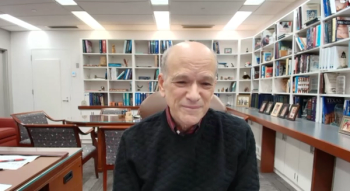
National Resident Matching Program (NRMP) Match Results
Dr Weissman discusses psychiatric residency recruitment by looking at the forces that affect a student’s selection of a psychiatric career rather than at what the influences have been during the past 5 years.
As we examine where psychiatric residency recruitment is today and where it is going we should perhaps borrow a view from Wayne Gretzkey, who said, “I skate where the puck is going, not where it is.” We can use this as a metaphor for psychiatric residency recruitment by looking at the forces that affect a student’s selection of a psychiatric career rather than at what the influences have been during the past 5 years.
Applicants in the matching program: 2006-2011
2011
2010
2009
2008
2007
2006
Graduating seniors of US allopathic medical schools: active applicants in the match
16,559
16,070
15,638
15,242
15,206
15,008
Applicants marched to PGY-1 programs
Seniors of US allopathic medical schools
15,588
14,992
14,556
14,359
14,201
14,059
Students/graduates of osteopathic medical schools
1561
1444
1408
1339
1136
1024
US citizen students/graduates of international medical schools
1884
1749
1619
1541
1347
1231
Non-US citizen students/graduates of international medical schools
2721
2881
3112
3108
3180
3151
US seniors matched to postgraduate year 1 (PGY-1) positions by specialty: 2006-2011
Specialty
2011No. (%)
2010No. (%)
2009No. (%)
2008No. (%)
2007No. (%)
2006No. (%)
Anesthesiology
671 (4.3)
624 (4.2)
612 (4.2)
524 (3.6)
448 (3.2)
451 (3.2)
Emergency medicine
1268 (8.1)
1182 (7.9)
1146 (7.9)
1083 (7.5)
1027 (7.2)
944 (6.7)
Family medicine
1301 (8.3)
1169 (7.8)
1071 (7.4)
1156 (8.1)
1096 (7.7)
1123 (8.0)
Psychiatry
640 (4.1)
670 (4.5)
656 (4.5)
595 (4.1)
633 (4.5)
643 (4.6)
Analysis
This year the number of US medical school seniors matching into psychiatry fell from 670 or 4.5% in 2010 of matched participants to 640 or 4.1%. This change is within the variance we have been seeing for the last 6 years. Although the change may not have a long-term meaning, we must be concerned that it may be the first step in a trend.
Graduating seniors of US allopathic medical schools select careers for many reasons, and we need to assess the factors that lead to their selection of psychiatric careers. We frequently hear that students select psychiatric careers because psychiatry offers them an opportunity to become more engaged with their patients. But today students are often exposed to psychiatric practices and inpatient services where medication management is or may not be perceived as the primary concern and activity of the psychiatrists with whom they observe and work on their psychiatric clerkships. In order to ensure the future recruitment of US graduates to psychiatry, we need to learn more about the practice desires of the current generation of medical students.
We essentially have 3 groups of students who enter our field. The first group is interested in the psychology of individuals and wants to practice psychotherapy and pharmacotherapy. The second group may be primarily interested in practicing pharmacotherapy, and the third may be most interested in neuropsychiatry and how changes in the brain affect behavior.
Obviously we have many students with overlapping interests. We must make room for all 3 groups if we are to optimally survive as a specialty. To do this, we must ensure that residency training offers meaningful experiences in each area and that there are practice opportunities for all 3 groups upon graduation from residency. A recent New York Times article presents a view that psychiatric practice is dominated by 15 minute medication management sessions.1 My concern is that, if given the choice of a 15-minute medication management psychiatric session versus a 15-minute primary care session, many students will select primary care.
Another issue to note is that unless the federal government increases the funding for residency positions with the ongoing expansion of allopathic and osteopathic medical school graduates producing a significant increase in US trained physicians by 2017, we will have few positions available for international medical graduates who are either non-US citizens or US citizens.
Reference
1. Harris G. Talk doesn’t pay, so psychiatry turns instead to drug therapy. New York Times. March 5, 2011.
Newsletter
Receive trusted psychiatric news, expert analysis, and clinical insights — subscribe today to support your practice and your patients.

















